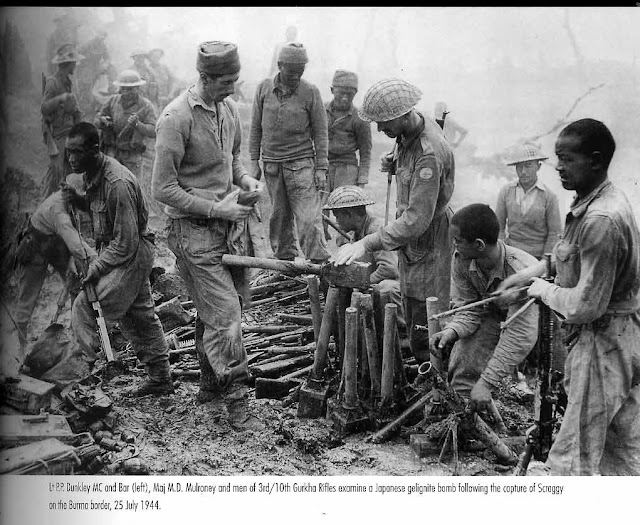Gorkha district is located in 27-15' 28°45' north latitude and 84027' - 84058' east longitude (NPP, 1999) According to the DDPN, 2004 the district is at an elevation of 1097 meters with the area of 3610 sq. kms (the maps has been displayed in Annex 11).
Out of them 112,535 k.m. land is covered by forest, 58990 km is covered by pasture and left 54359 km is agriculture land of the total agricultural land 41,482 is cultivated and 13,057km is non-cultivated" :--Ecologically this district lies in the hilly region the Grokha comprises of three topographical regions, they are high Himalayans, high mountain and mid mountain. For the administrative purpose, it lies in the Midwestern zone and it's headquarter is Pokharithok.
 |
| GHALE GAUN, GORKHA |
 |
| GORKHALI, DURING THE SECOND WORLD WAR |
Gorkha has multi-cultural and multi-ethnic groups of people. The major castes in the district are Gurung, Brahmin, Chhetri, Magar, P-; Newar, Sarki, Kami, Damai, Muslim and Tamang respectively. The majority of the Gorkhali people speaks Nepali language and some of them speak s(Gurung, Magar, Newar Tamang and Chepang) their mother tongue. Large number of people of the district are Hindus where some are Buddhists, Christian and Islam, Jain, Sikh respectively (CBS, 2001).



No comments:
Post a Comment